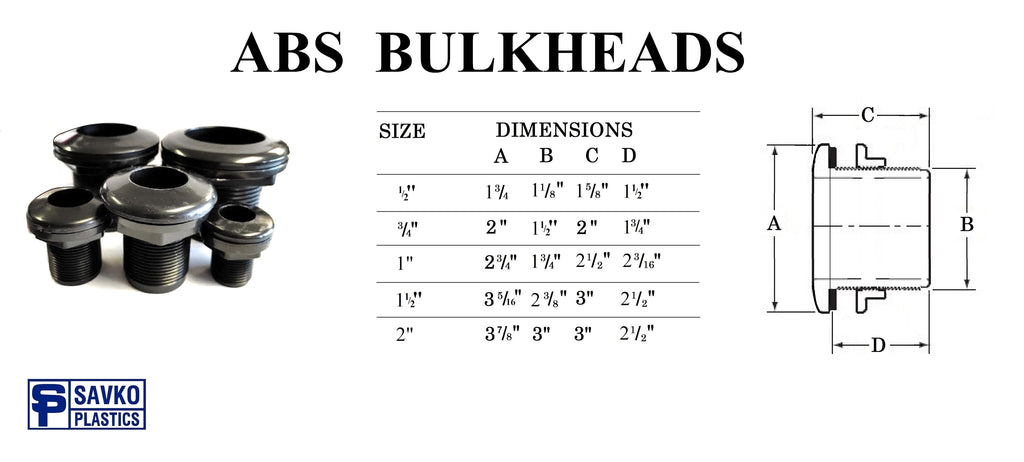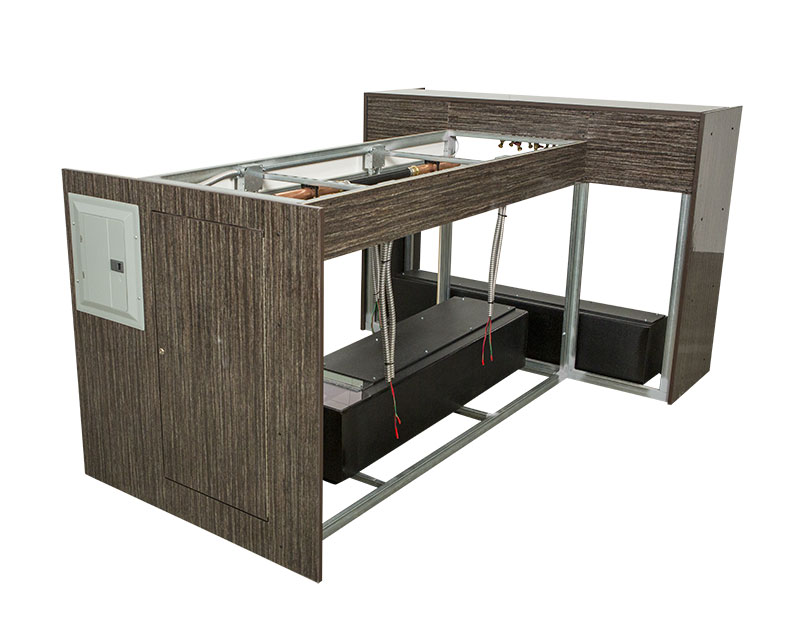Bulkhead on Lake Livingston: Evaluating Building Materials
Wiki Article
The Function of Bulkhead in Enhancing Waterfront Visual Appeals and Capability
Bulkheads serve a crucial function in waterside areas, stabilizing visual appeals with practical benefits. They support coastlines, reducing disintegration while boosting the visual landscape. With cautious design, these frameworks can transform barren areas into lively community hubs. The products and styles picked can significantly influence the environment of the waterside. This intersection of energy and beauty increases crucial inquiries about future layout choices and their ramifications for metropolitan settings. What advancements might redefine bulkhead functionality?Significance of Bulkheads in Coastline Protection
Bulkheads play a vital duty in coastline protection by functioning as barriers against disintegration and tornado rises. These frameworks, typically made from timber, concrete, or steel, are tactically mounted along shorelines and riverbanks to stabilize the land - Bulkhead on Lake Livingston. By dispersing and soaking up wave power, bulkheads avoid soil displacement and secure beneficial property and infrastructure from damages triggered by rough weather. In addition, they help maintain water quality by decreasing overflow and sedimentation, which can adversely affect aquatic ecosystemsIn enhancement to their protective features, bulkheads can promote entertainment tasks such as fishing and boating by providing stable accessibility factors along the shoreline. Their installment frequently adds to enhanced safety and ease of access for both visitors and homeowners. Inevitably, bulkheads offer an important objective in protecting shorelines, ensuring that ecological equilibrium is preserved while protecting human interests versus the pressures of nature.

Visual Contributions of Bulkheads
Bulkheads can considerably boost the visual allure of watersides with thoughtful style choices. By choosing proper shades and materials, these frameworks can integrate with their environments, adding to a total aesthetic experience. This integration not just elevates the elegance of the shoreline but additionally mirrors the character of the neighborhood environment.Aesthetic Appeal Enhancement
While commonly neglected, the visual contributions of bulkheads play a considerable function in improving the visual appeal of beachfronts. These structures give a clear delineation between land and water, producing a sense of order and company that is visually pleasing. By integrating functional layout with sculptural elements, bulkheads can integrate with the natural environments, adding to the total landscape. Furthermore, they can be made to enhance existing building features or enhance the waterfront's character, making it much more inviting. The existence of bulkheads can likewise urge the unification of landscape design components, such as yards or seating locations, further enhancing the aesthetic experience. Inevitably, well-designed bulkheads offer to boost the elegance and beauty of beachfront rooms, making them extra eye-catching to site visitors and locals alike.Color and Material Choices
The selection of shade and products for bulkheads substantially affects their aesthetic impact on beachfronts. Various materials, such as concrete, wood, and metal, deal distinctive looks and appearances, permitting developers to develop aesthetically appealing frameworks that match their surroundings. For circumstances, natural wood can stimulate a rustic beauty, while sleek steel surfaces may share a contemporary aesthetic.Shade choices likewise play an important function; vibrant shades can invigorate a room, while soft tones cultivate a serene environment. The best mix of colors and products can enhance the general visual experience, creating a cohesive look that accentuates the waterfront. Inevitably, thoughtful material and shade option adds to the bulkhead's functionality while improving the waterside's aesthetic charm.

Integration With Environments
A thoughtfully designed bulkhead not just serves its practical objective but also plays a significant duty in enhancing the visual consistency of waterside environments - Bulkhead on Lake Livingston. By incorporating perfectly with the surrounding landscape, bulkheads can enhance natural attributes such as beaches, parks, and seaside plant life. Their style can mirror local building styles, making sure that they blend into the neighborhood's aesthetic material. In addition, using lasting materials and native plants around bulkheads can advertise environmental equilibrium while enhancing aesthetic allure. By prioritizing combination with environments, bulkheads contribute to a cohesive waterfront experience that invites both neighborhood residents and site visitors. This focus to visual detail cultivates a sense of location, improving the overall personality of the beachfrontRecreational Opportunities Developed by Bulkheads
Bulkheads play an important duty in boosting recreational chances along watersides. They give improved access for fishing, enabling anglers to reach much deeper waters effortlessly. In addition, these frameworks facilitate various water sports, supplying safe launch points and areas for activities such as kayaking and paddleboarding.
Fishing Gain Access To Improvements
While boosting waterside aesthetic appeals, angling gain access to improvements also produce useful recreational opportunities for local neighborhoods. Bulkheads can be developed with integrated fishing systems, supplying anglers convenient and risk-free access to water bodies. These frameworks not only assist in angling however additionally work as monitoring points for wildlife, allowing locals and visitors to engage with nature. Improved access can lead to boosted engagement in angling tasks, promoting a sense of neighborhood and promoting outdoor recreation. On top of that, properly maintained fishing areas can draw in tourism, profiting regional economies. By offering marked fishing zones, bulkheads add to lasting fishing practices, ensuring that neighborhood ecosystems continue to be healthy and balanced while improving the overall experience for recreational fishers. Inevitably, these enhancements improve beachfront areas for all individuals.Water Sports Facilitation
As beachfront areas evolve, the assimilation of bulkheads plays an essential function in facilitating water sporting activities and broadening recreational possibilities for neighborhoods. These structures supply stable accessibility points for numerous activities, consisting of jet, kayaking, and paddleboarding snowboarding. By developing assigned areas for introducing and docking, bulkheads boost security and access for enthusiasts of any ages. In addition, they assist to specify recreational locations, separating them from angling zones and boating networks, thereby decreasing blockage and potential dangers. The presence of bulkheads likewise adds to improved water conditions, as they can help minimize wave action and disintegration, developing a more positive setting for water sports. Eventually, bulkheads foster a dynamic waterfront culture that motivates active lifestyles and neighborhood interaction.Ecological Advantages of Bulkheads
Though discover this frequently viewed mostly as structural elements, bulkheads supply substantial environmental benefits that improve coastal environments. By preventing erosion, bulkheads support shorelines, which assists preserve aquatic habitats and secures crucial plant life. This stablizing motivates the development of all-natural buffer zones, allowing indigenous plant varieties to prosper while advertising biodiversity.Bulkheads can help filter toxins from stormwater runoff, boosting water top quality in surrounding water atmospheres. By acting as barriers, they also decrease sedimentation in waterways, preserving the wellness of fish populations and various other water life. Furthermore, bulkheads can serve as substratum for aquatic organisms, cultivating habitats for oysters, barnacles, and various other types that add to eco-friendly balance.
Area Interaction and Bulkhead Design
Reliable neighborhood engagement plays an essential duty in the design of bulkheads, assuring that local voices and viewpoints form the advancement process. Through participatory planning, stakeholders-- consisting of residents, service proprietors, and environmental teams-- can add their insights and preferences. This collective strategy not only promotes a feeling of possession and pride among neighborhood participants yet likewise improves the bulkhead's capability and aesthetic appeal.Public workshops, surveys, and discussion forums provide systems for discussion, enabling the recognition of particular neighborhood demands and concerns. By incorporating comments, designers can produce bulkheads that show the one-of-a-kind personality of the beachfront and address regional environmental issues. Furthermore, entailing the neighborhood in the design process can cause cutting-edge remedies that promote sustainability and resilience. Eventually, efficient involvement warranties that bulkhead tasks are not only visually pleasing but likewise serve the functional demands of the neighborhood, enhancing general waterside experiences.
Future Patterns in Bulkhead Growth
The combination of neighborhood input in bulkhead style not only enhances neighborhood importance right here but also sets the stage for future advancements in bulkhead advancement. Emerging trends indicate a change towards environmentally lasting materials, focusing on the usage of recycled and eco-friendly elements. This approach not just addresses environmental issues but also straightens with neighborhood values concentrated on sustainability.In addition, improvements in innovation are leading the way for smart bulkhead systems outfitted with sensors that keep an eye on architectural integrity and water levels, offering real-time information for upkeep and safety.
In addition, aesthetic factors to consider are developing, with an expanding emphasis on integrating green areas and recreational areas right into bulkhead designs, enhancing the total waterfront experience.
As city locations face climate adjustment, resistant bulkhead designs that can stand up to severe weather events are prepared for. These fads signify a step in the direction of multifunctional, sustainable, and community-oriented bulkhead advancements that show the worths and needs of modern society.
Often Asked Inquiries
What Materials Are Frequently Used to Create Bulkheads?
Usual products used to construct bulkheads include wood, plastic, steel, and concrete. Each product offers distinct benefits, such as sturdiness, resistance to deterioration, and environmental influence, affecting their choice based on particular site conditions and requirements.Exactly How Frequently Do Bulkheads Need Maintenance or Services?
this hyperlink Bulkheads usually require maintenance or repair work every 5 to one decade, relying on environmental conditions, materials used, and exposure to water. Routine assessments can aid identify problems early, stopping costly repair work and guaranteeing long life.Can Bulkheads Affect Resident Wildlife Habitats Adversely?
Yes, bulkheads can adversely affect regional wildlife habitats by disrupting natural shorelines, restricting accessibility to tidal locations, and modifying water flow, which might prevent the development of necessary plants and impact regional aquatic varieties' survival.Exist Laws Governing Bulkhead Building and Positioning?
Yes, guidelines governing bulkhead building and construction and placement typically exist at neighborhood, state, and federal degrees. These policies intend to ensure environmental security, advertise sustainable methods, and decrease adverse effect on surrounding ecosystems and areas.What Is the Average Life-span of a Bulkhead?
The typical lifespan of a bulkhead commonly ranges from 25 to half a century, relying on materials used, ecological problems, and maintenance practices. Normal assessments and timely repair services can considerably extend this life expectancy.Bulkheads can substantially improve the aesthetic charm of beachfronts through thoughtful layout selections. While frequently ignored, the visual contributions of bulkheads play a significant function in boosting the aesthetic appeal of beachfronts. A thoughtfully developed bulkhead not only serves its functional objective but also plays a significant function in improving the aesthetic consistency of waterfront environments. Bulkheads play an important role in improving leisure chances along waterfronts. The combination of neighborhood input in bulkhead layout not only improves regional significance however likewise sets the stage for future developments in bulkhead development.
Report this wiki page